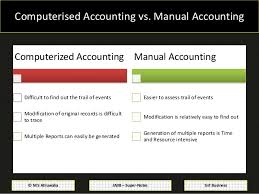The ability to set a goal is always a measure of a person’s ability to succeed. But then, setting goals really doesn’t make someone succeed. It requires a well established planning to achieve the goals. Planning is required because it ensures a direction for day-to-day actions in the process of achieving the goals. It would be similar for financial goals as well. Financial planning is as important as setting financial goals. The financial goals can be short term, medium term or even long term depending on the individual requirements. Hence financial planning varies from person to person depending on the goals set.
Creating a personal financial planning has in broad 6 basic steps:
- Determining current financial situation
- Developing financial goals
- Identifying alternative course of actions
- Evaluation of alternatives
- Creating and implementing financial plan
- Review and revise financial plan
Determining current financial situation
Before setting goals and developing financial planning to achieve the goals, it is very important to know the current status. Hence determining current financial situation is the first step in financial planning. Having a deep understanding of the current financial status would help one set realistic goals and also helps in setting up more practical and implementable strategies. Thus having a clear understanding of the current financial situation will give an advantage to achieve financial goals faster.
Developing financial goals
Once you have the understanding of current financial status, the next step in financial planning process is setting financial goals. This will give a clear destination thus setting up a roadmap to achieve the goals. To set financial goals one should consider some obvious objectives such as monthly income and expenditure, retirement plans etc., Goals should be smart, specific, realistic and time-based. One should be careful in differentiating between wants and needs when setting financial goals and should establish the priorities.
Identifying alternative courses
As said, setting financial goals would give an idea of the destination. But there can be many ways to reach the destination. It is important to identify and evaluate various ways available to achieve the goals. The evaluation can be based on various parameters depending individual’s priorities.
Evaluation of alternatives
Once the available options are identified, now it’s time to evaluate them based on ones financial objectives. The various parameters like income, expenses, savings, investment objectives, future goals etc., should be considered in evaluating the alternatives. This would help in choosing the alternative which yields the highest returns.
Creating and implementing financial plans
Majority of the work in financial planning has been done. Now, one should prioritize the goals and finalize the ways to achieving goals. The current situation and the urgency of different goals and their impact on achieving other goals should be considered while finalizing the financial plan.
Review and revise financial plan
This is the last step in financial planning but perhaps the most important of all. You might have put all your efforts in designing the financial plan, but however, it cannot be assured that everything goes as planned. It is highly possible that the strategies planned may not yield the expected results and requires regular adjustments to achieve the financial goals. Reviewing the financial plan regularly will also help in gauging the progress towards meeting one’s goals.
Click here for government certification in Accounting, Banking & Finance





8 Comments. Leave new
Well Explained all the points.
Good efforts. A very systematic and sequenced article. 😉
Knowledgeable article
nice article and way of writing is also good.
Thank you all. 🙂
Informative artilcle
that’s the job of a CFP. one interested in this Financial Planning can go for it.
Well structured one 😀
Actuallyy 😀
The i like the partition of hte subtopics 😀
Good work 😀
Well done